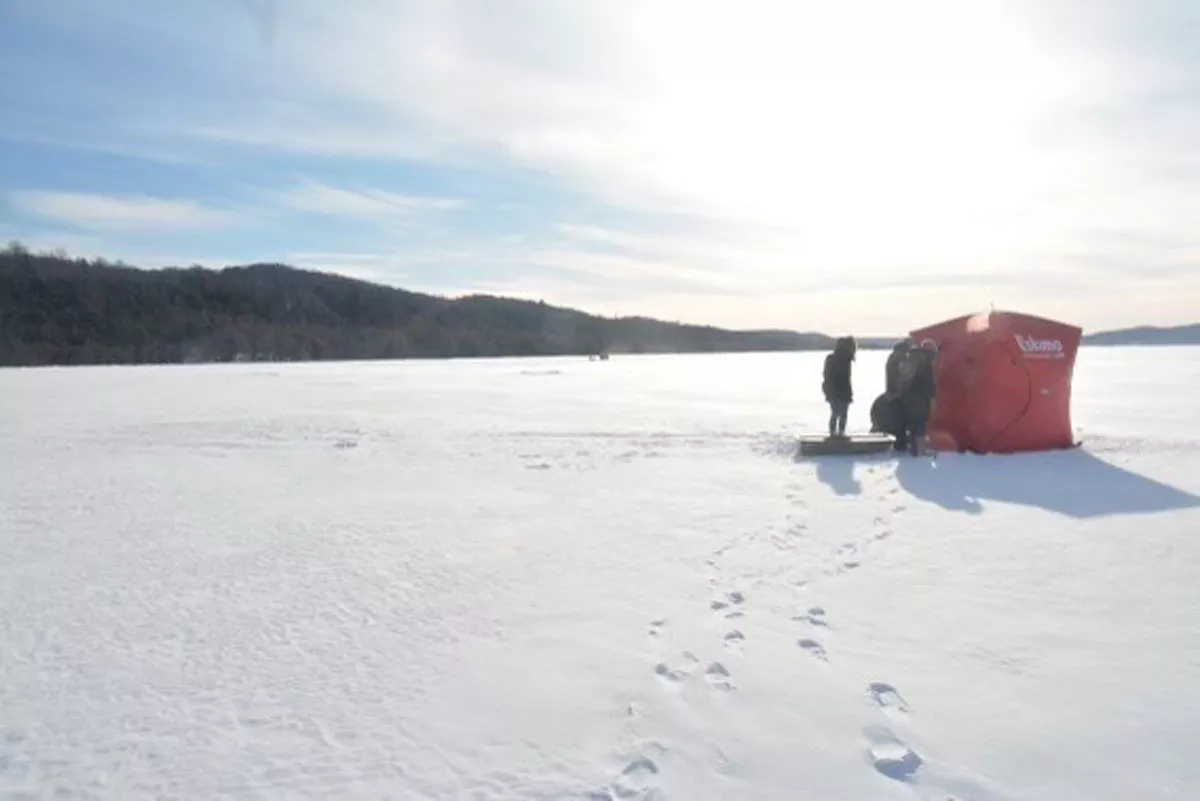Researchers are fishing for a clearer picture of Great Lakes ice
A nonprofit is offering to pay ice fishermen up to $100 to help monitor the Great Lakes


Audio By Carbonatix
[
{
"name": "GPT - Leaderboard - Inline - Content",
"component": "35519556",
"insertPoint": "5th",
"startingPoint": "3",
"requiredCountToDisplay": "3",
"maxInsertions": 100,
"adList": [
{
"adPreset": "LeaderboardInline"
}
]
}
]
This coverage is made possible through a partnership between IPR and Grist, a nonprofit environmental media organization.
There’s a hole in what we know about ice on the Great Lakes.
While satellites can see where the ice is, it can be difficult to measure its thickness. Now, a new effort to fill in that gap is underway, led by the nonprofit Great Lakes Observing System, or GLOS.
GLOS is asking ice fishermen and others who spend time on the ice to sign up. Participants would send in information on how thick the ice is and the level of snow cover, and would receive a stipend of up to $100.
Shelby Brunner, a science and observation manager with GLOS, helped launch the program in December.
Federal agencies are already working to gather ice thickness data, but that’s often for the specific needs of various agencies and offices, like the Coast Guard.
When regional ice modelers told Brunner they wanted more information about ice thickness across the region, she thought of her dad, an ice fisherman. People like him are already out on the ice, using the right tools and sharing their observations with others.
“We don’t have to buy them augers. They drill the hole in the ice, they estimate thickness, and then they tell people,” she said. “Everyone’s heard a fishing story in their lives.”
The question, she said, was how to get ice fishers to report that information to GLOS. So they developed the community data gathering program — a wider effort across the Great Lakes basin to collect data and share it with those already doing research.
Ice forecasts are used to make decisions about whether and when to do things like fishing or snowmobiling, Brunner said.
“Ice thickness is important for safety, as we know, it’s important for maritime economy, for the icebreakers, for rescue efforts, and there’s not really a good way to determine it currently,” she said.
There are limitations to the program. For instance, only certain parts of the Great Lakes freeze enough to ice fish on. Another concern Brunner has heard is about the quality of the data, since they are relying on members of the public to collect it. But she said even an estimate of ice thickness will help, especially when gathered by people who have been going out on the ice for years.
And they’re being deliberate in how they move forward; the data won’t be released to the public at first, instead informing existing ice modeling efforts through spot-checks and helping modelers better determine how well their tools are working to predict the timing of ice-out and other events.
Great Lakes ice coverage varies from year to year, but trends show it declining since record-keeping started in the early 1970s. And the warming climate lends additional urgency to such efforts.
“That will tell us how well we’re doing at predicting the ice,” Brunner said. “And there’s been so many variable winters over the past couple of winters we’ve had, you know, it hasn’t been a steady state or predictable in any way. So we’re trying to make sure we capture what’s there.”
This is a bit of a departure from some of GLOS’s past work, like a website called Seagull that aggregates sensor-based, real-time buoy and subsurface information and is used by commercial and recreational fisheries, freighter captains, the weather service, beachgoers, and more.
The nonprofit was awarded $5 million dollars for this and other projects through the Inflation Reduction Act, to be spent as needed over the next five years. As of Feb. 6 they’re still able to access it, Brunner said, though the Trump administration has ordered a pause on wide swaths of federal spending, including money from the IRA.
And despite the turbulent environment for federal funding, GLOS still plans to move ahead in hopes that the public can help inform our understanding of ice in the region.
There’s a webinar on this project planned for 7 p.m. on Feb. 6. More information about the program can be found at glos.org/ice-thickness-monitoring.






